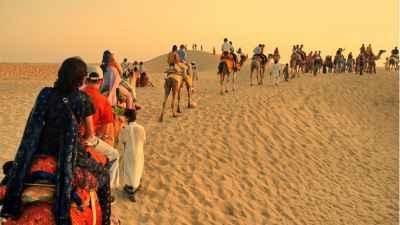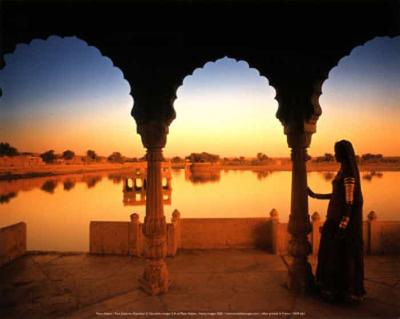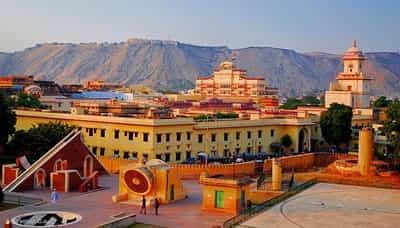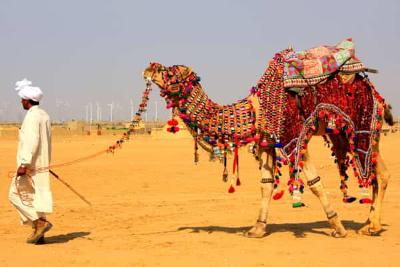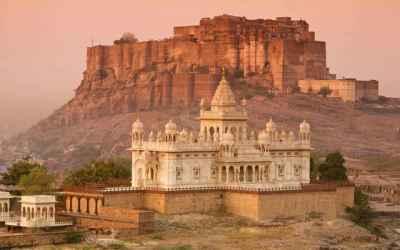Rajasthan’s UNESCO World Heritage Sites: A Detailed Guide
Rajasthan, the land of kings, is known for its vibrant culture, rich history, and majestic palaces. But did you know that Rajasthan is also home to several UNESCO World Heritage Sites? These sites are of outstanding universal value and are recognized for their cultural and natural significance. In this blog post, we will take a detailed look at some of Rajasthan's UNESCO World Heritage Sites and explore the unique stories they hold.
Ranthambore National Park
Located in the Sawai Madhopur district of Rajasthan, Ranthambore National Park is one of the most popular wildlife destinations in India. Spread over an area of 392 square kilometers, the park is home to a variety of flora and fauna, including the majestic Royal Bengal Tiger. Ranthambore was declared a UNESCO World Heritage Site in 2013 and is a must-visit for wildlife enthusiasts and nature lovers.
Visitors to Ranthambore National Park can embark on thrilling safari rides to spot the elusive tigers in their natural habitat. Apart from tigers, the park also houses several other species like leopards, sloth bears, sambar deer, and many species of birds. The rugged terrain, ancient ruins, and picturesque lakes within the park add to its charm.
Keoladeo National Park
Situated in Bharatpur, Keoladeo National Park is another UNESCO World Heritage Site in Rajasthan. Formerly known as Bharatpur Bird Sanctuary, the park is a paradise for bird watchers and nature enthusiasts. It attracts migratory birds from as far as Siberia and Central Asia during winters, making it a haven for avian species.
Spread over an area of 28 square kilometers, Keoladeo National Park is home to more than 370 species of birds, including the iconic Siberian Crane. Visitors can explore the park on foot, bicycle, or via rickshaws to get a closer look at the diverse avifauna. The park also has a rich variety of flora and is a vibrant ecosystem teeming with life.
Jantar Mantar, Jaipur
Jantar Mantar, located in the heart of Jaipur, is an astronomical observatory built by Maharaja Sawai Jai Singh II in the 18th century. It is an architectural marvel consisting of a collection of 19 astronomical instruments, including the world's largest stone sundial. Jantar Mantar was inscribed as a UNESCO World Heritage Site in 2010.
The observatory is a testament to the scientific advancements made by the Rajput rulers of Rajasthan. Each instrument at Jantar Mantar serves a specific purpose, including measuring time, predicting eclipses, and tracking celestial movements. The precision and accuracy of these instruments astound visitors even today.
Chittorgarh Fort
Situated in the city of Chittorgarh, Chittorgarh Fort is the epitome of Rajput valor and sacrifice. It is the largest fort in India and stands as a symbol of the region's rich history and cultural heritage. The fort was inscribed as a UNESCO World Heritage Site in 2013.
Chittorgarh Fort is known for its magnificent palaces, ancient temples, and grand gates. It has witnessed several battles and acts of heroism, showcasing the indomitable spirit of the Rajputs. The fort offers panoramic views of the surrounding landscape and is a must-visit for history buffs and architecture enthusiasts.
Hill Forts of Rajasthan
The Hill Forts of Rajasthan are a series of six majestic forts that dot the Aravalli mountain range. These forts, located in Chittorgarh, Kumbhalgarh, Jaisalmer, Ranthambore, Amber, and Gagron, were built by various Rajput kings and have been declared UNESCO World Heritage Sites.
Each fort is a testament to the architectural brilliance and strategic prowess of the Rajputs. The forts boast of intricate carvings, striking palaces, and elaborate gateways that transport visitors to a bygone era. Exploring these forts is like stepping back in time and immersing oneself in the grandeur of Rajasthan's royal past.
Ahmedabad & Jaipur: Historic City Centers
Ahmedabad and Jaipur, two of Rajasthan's most vibrant cities, have also been recognized as UNESCO World Heritage Sites for their historic city centers. These cities have a rich history and cultural heritage, with stunning architecture and bustling markets.
In Ahmedabad, the historic city center showcases the fusion of Hindu and Islamic architectural styles, with intricate step wells, mosques, and temples. The narrow lanes of the old city are filled with bustling bazaars and colorful textiles. Likewise, Jaipur's historic city center is a vibrant mix of palaces, markets, and heritage sites, including the famed Hawa Mahal and City Palace.
Conclusion
Rajasthan's UNESCO World Heritage Sites offer a glimpse into its rich cultural and historical legacy. From majestic forts to vibrant national parks, each site has a story to tell and an experience to offer. Exploring these sites is like taking a journey back in time, immersing oneself in the grandeur and charm of Rajasthan. So pack your bags, put on your explorer's hat, and get ready to unravel the wonders of Rajasthan's UNESCO World Heritage Sites.
Don't forget to share this blog post with your fellow travelers and adventure enthusiasts - let's spread the word about the incredible heritage of Rajasthan!
Disclaimer : The information provided in this blog is for general informational purposes only. While we strive to keep the content accurate and updated, TravelSetu assumes no liability for errors or omissions. If you believe any part of this blog infringes your rights or causes concern, please notify us immediately at info[at]travelsetu[dot]com so that appropriate action can be taken.
